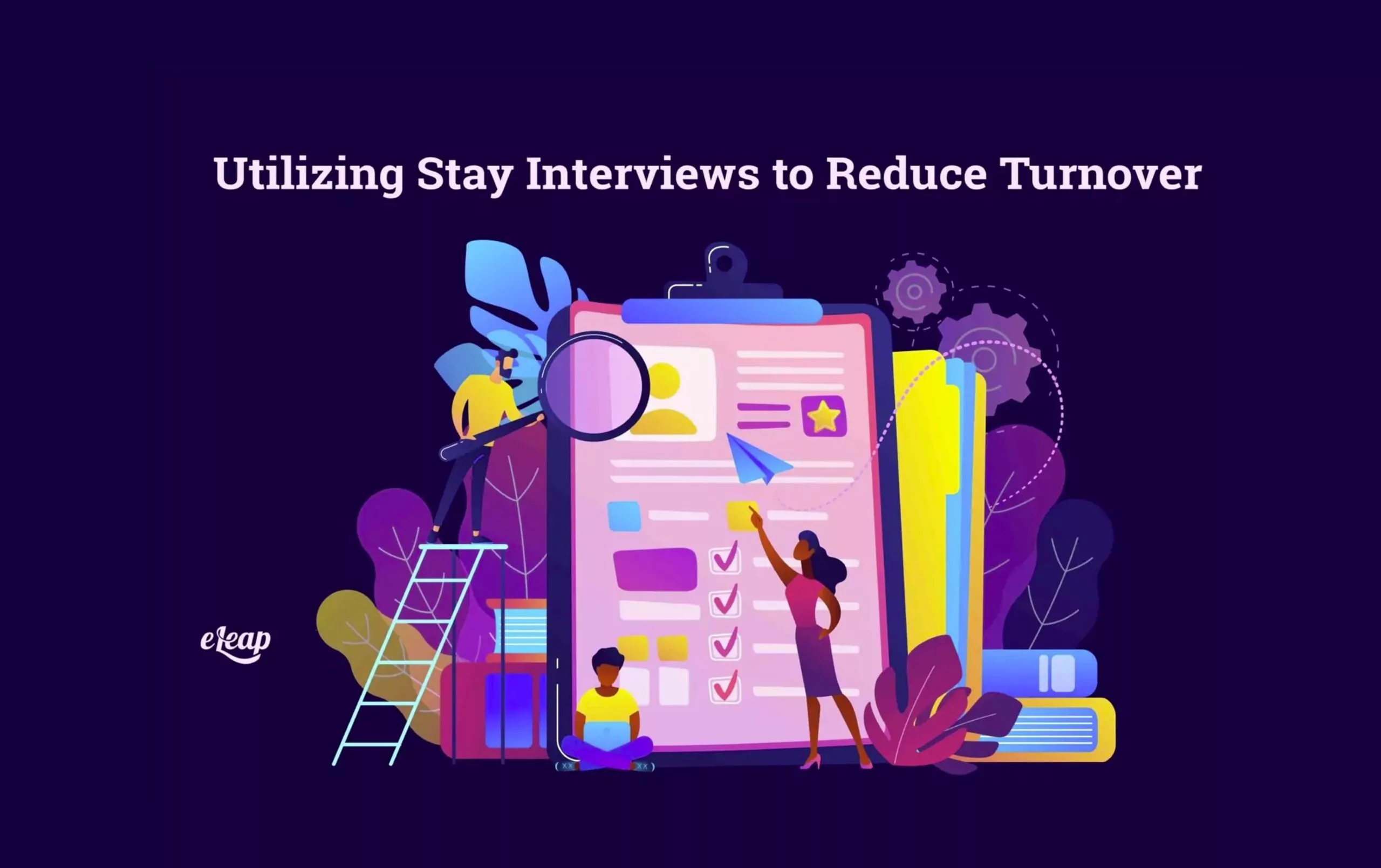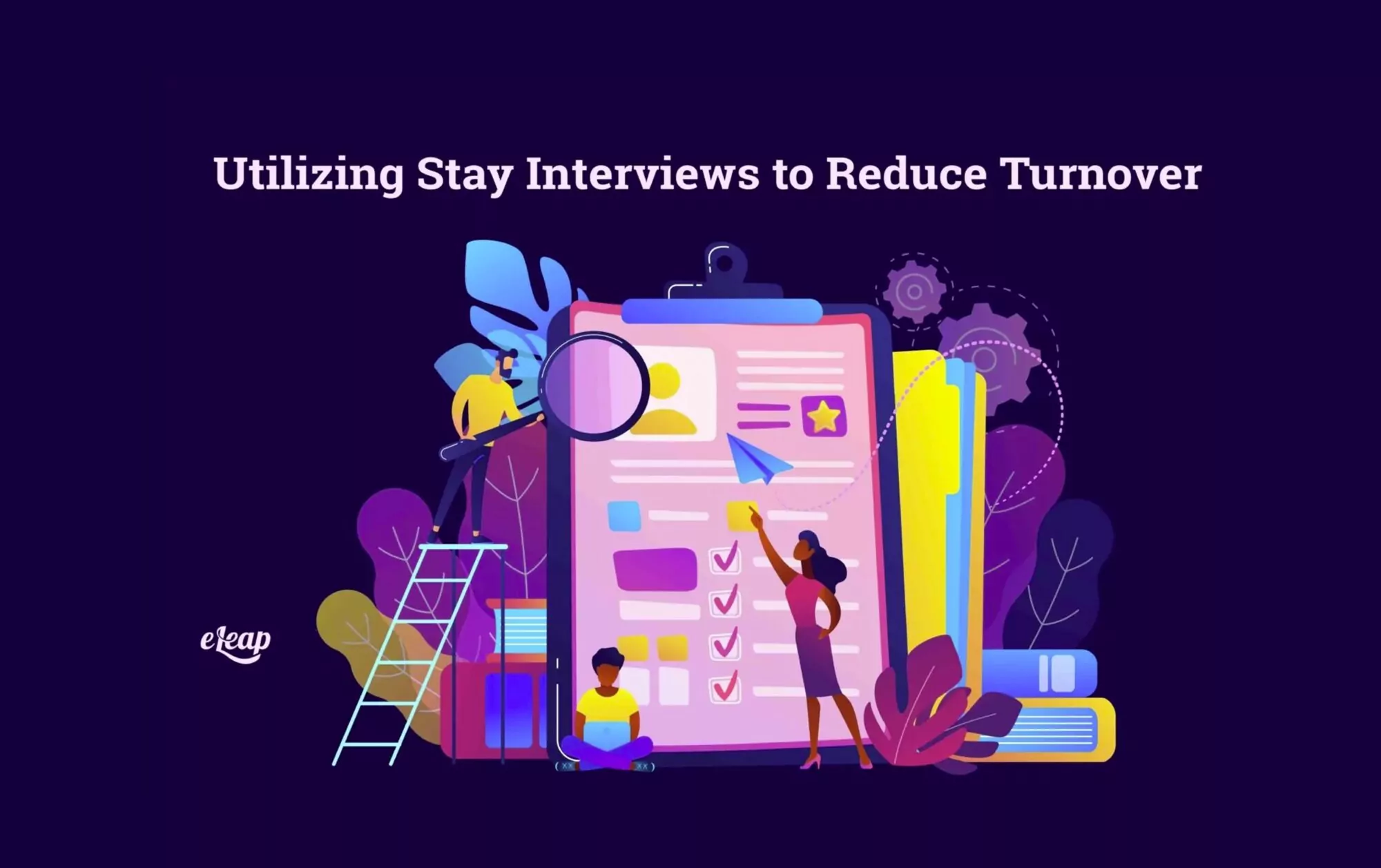Utilizing Stay Interviews to Reduce Turnover

As the labor workforce continues to struggle after the COVID pandemic, it’s more important than ever to utilize relevant and targeted stay interview questions to hold onto the staff we have. Companies have started to get creative, looking for ways to decrease turnover rates. Some have opted to continue remote or hybrid work for their employees, while others have adopted stay interviews. Others have gone one step further by decreasing their requirements and looking for employees in industries where they might not have just a few years ago.

Many have dubbed the economic instability as “The Great Resignation,” with both job openings and resignations at all-time highs just a few months ago. The question becomes, how do we stop employees from leaving? The answer might very well be to communicate with them consistently and well before they consider leaving. In other words, create an environment that is welcoming, open, and educational for both employee and employer. Add in the element of stay interviews, and you might be on your way to stability.
Can Stay Interviews Reduce Turnover?
It is common knowledge that our employees are the backbone of our company, yet little is often done to ensure that backbone remains strong, which is partly why “The Great Resignation” continues to blast full steam ahead. Something snapped when COVID happened, but evidence shows it was in the works before 2020.
Some believe the resignation trend started a decade ago, long before the world shut down. According to data from the Harvard Business Review, from 2009 to 2019, the number of monthly resignations grew by 0.10% each year. As 2020 rolled in, things slowed down, most likely due to uncertainty about COVID. They didn’t slow down for long, though.
Experts studying this trend say there is a variety of factors driving the continued increase. These include retirement, relocation, reconsideration, reshuffling, and reluctance. The last of these, reluctance, is one reason why it’s become increasingly hard to hire in some industries, as people do not want to return to the same workforce they left.
Stay Interviews vs. Cost of Replacing Staff
When you consider the cost of turnover, you have to consider a few things. Posting for a new staff member and the time it takes to assess applicants and conduct interviews, plus the time that lapses from when your old employee leaves to when a new one starts, is just the tip of the iceberg. You also have to consider the cost of training your new hire and crossing your fingers that they’re a good fit.
Additionally, depending on your industry and the employee who left, will there be others to join them? Will customers opt to leave as well since that was their favorite team member? When an employee leaves, there’s much more to it than just accepting their resignation.
On the financial side of things, you may also lose money due to a severance package or bonus money owed to the departing staff member. Knowing this makes one wonder, once again, why the focus isn’t more on keeping the employees we have. This brings us back to stay interviews and using well-designed stay interview questions to ensure that you understand what is going on with current team members.
What Are Stay Interviews?
Stay interviews are one on one meetings between staff and management to connect with each other. These meetings are not so much about progress and goal achievement. They are intended to be focused on what the employee needs moving forward. What is going right in their current position, and what could be better?
It makes sense, after all. Shouldn’t we have been focused on the employee and how they see their place on the floor or in the company this whole time? If you truly want to know how to progress as a company, asking the ones who are doing the day-to-day tasks is crucial. And yet, very few companies do.
Even now, as companies twist and go through hoops trying to keep employees, many are still focused on the exit interview side of things. Not realizing that at that point, they’ve already lost a valuable member of their team and now have to start from scratch. And in most cases, anything said during the exit interview is glossed over, and the same cycle is repeated again.
Purpose of Stay Interviews
The purpose of stay interviews might seem obvious. It is more cost-efficient to keep the employees you have than it is to continue hiring new ones. It’s not all about the money, though. When employees feel like their thoughts matter, they are motivated to work harder. With this motivation comes increased productivity and morale. And, if employees are happy in their workplace, there is less turnover.
According to entrepreneur.com, there are three reasons why employees stay, and it has little to do with money. They stay because they feel connected, respected, and supported. Since the whole essence behind the stay interview is to provide these things, why wouldn’t we implement this strategy?
How to Conduct a Stay Interview?
The stay interview should never be conducted in a formal setting. It is meant to be a casual conversation that is both open and supportive. Both employees and managers may struggle with this concept at first. The interviews should also be one on one, even if it is more time efficient to complete them by the department. Doing so negates the whole purpose.
Employees should be allowed to speak freely about their position and the company as a whole. The manager may need to redirect at times as it is not meant to be a gossip or griping session. As such, you may want to consider some ground rules. Create these with staff as a first step in forging a cooperative path. You can also create a list of questions you want to ask. These help you evaluate how your staff feels about the job, the business, and their role. Propose these questions in an open-ended fashion to get the most out of the stay interview.
It’s important to have stay interviews a few times throughout the year and not just when we’re struggling to maintain our staff. Set the dates out ahead of time so employees understand the importance. With the first interviews, it’s normal to feel as if everyone is simply testing the waters. But, as the interviews progress, you can gain valuable insight into your employees and possible ways to improve the environment in which they work.
Once you’re headed on the right path, you might also schedule larger interviews with the departments, but never let go of the individual stay interviews, as they are your guide to reaching your goals.
Benefits of Stay Interviews
The benefits of stay interviews are apparent. They can help decrease employee turnover, increase morale, create new ideas for your business, help your employees feel connected and respected, and more.
Implementing stay interviews is a step in the direction of letting your employees know you’re invested in them. In turn, they will be loyal to you. This is key to decreasing turnover. You can also learn ways to possibly support your employees beyond work as well.
Do you have employees that struggle with paying for childcare? Can you work with local daycares to get a discount for your staff? What other concerns might arise during the stay interviews that allow you to take action as an employer and decrease the stress on your staff?
The benefits of stay interviews are dependent on the consistency of the program and how the interviews are conducted. Your management team must buy into the process for it to work. Their attitudes toward the interviews will be reflected in the employees.
Conclusion
Implementing stay interviews within your organization can benefit your team as a whole. In a time when it is becoming more and more difficult to hang onto and/or hire new staff, doing your best to increase retention is key. Decreasing turnover is cost-effective and keeps your business headed forward and not idle at the side of the road.
Talk with your management team about stay interviews and why you want to implement them. Explore their feelings and suggestions to ensure everyone is on the same team. Once you have them on board, you can create general rules, if needed, and talk with the employees about the stay interview process. Expect some nervousness in the beginning, especially if this is a departure from how your business normally operates.
You may need to tweak things along the way, but after a few rounds, things should run smoothly, and you will begin to see the benefits. Any decrease in turnover, other than your normal instances, such as retirement, will be worth it. Plus, as an investment in your staff, your worth as a business will grow when you do need to replace employees.
Word of mouth is free and influential. If your employees enjoy working for your business, they will tell others, and before long, you will not only have a happier and more productive staff, but you will also have possible opportunities to add staff as your business grows. Stay interviews should be the way businesses conduct business, and it can all start with you.